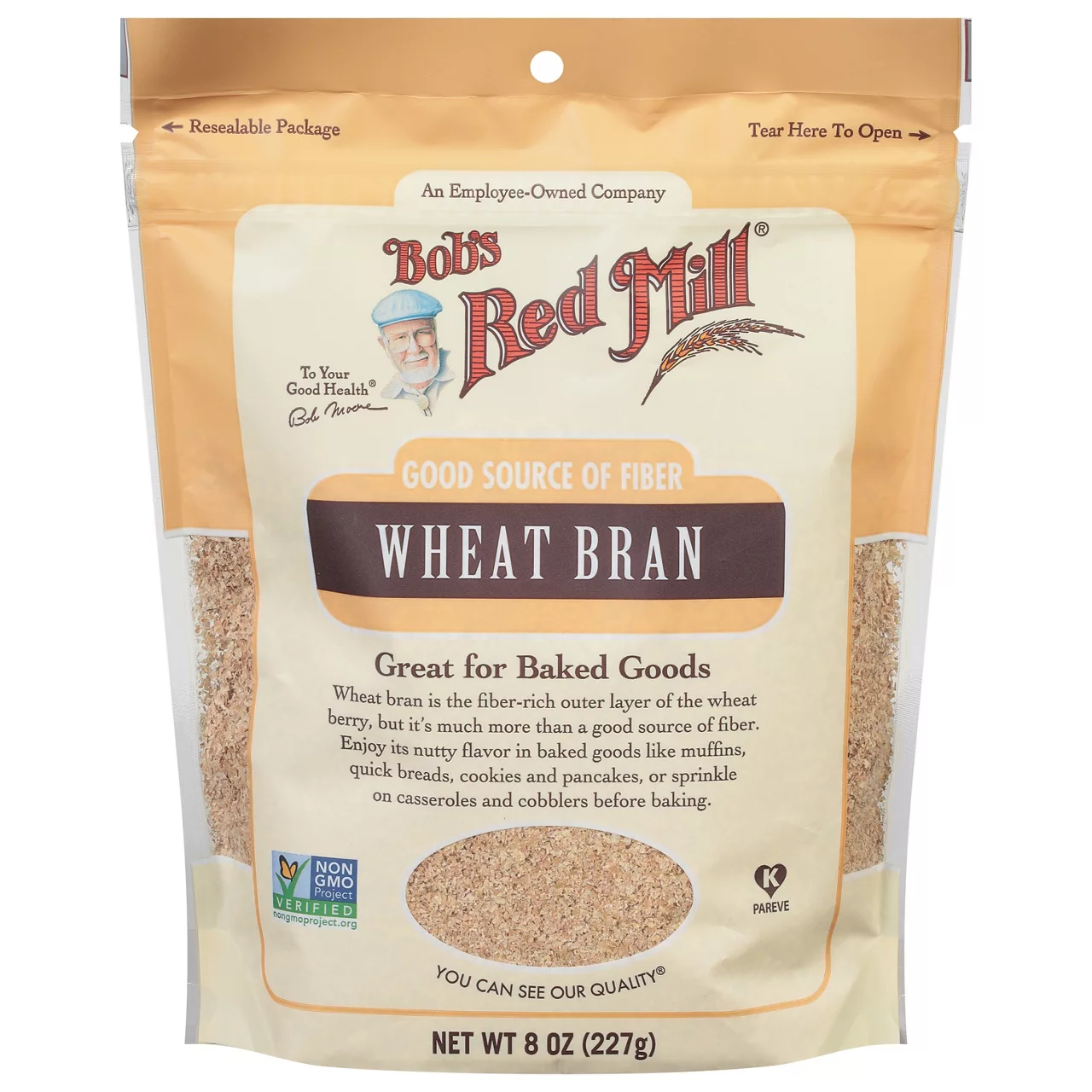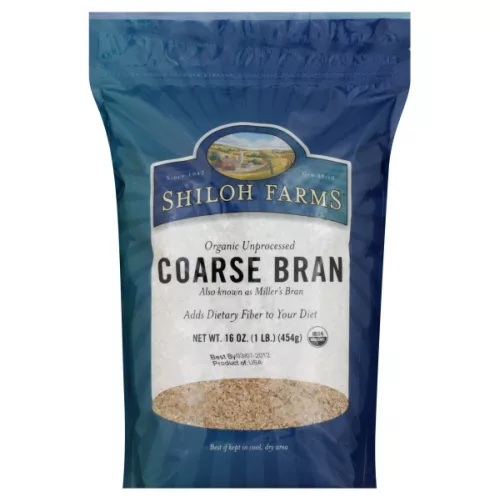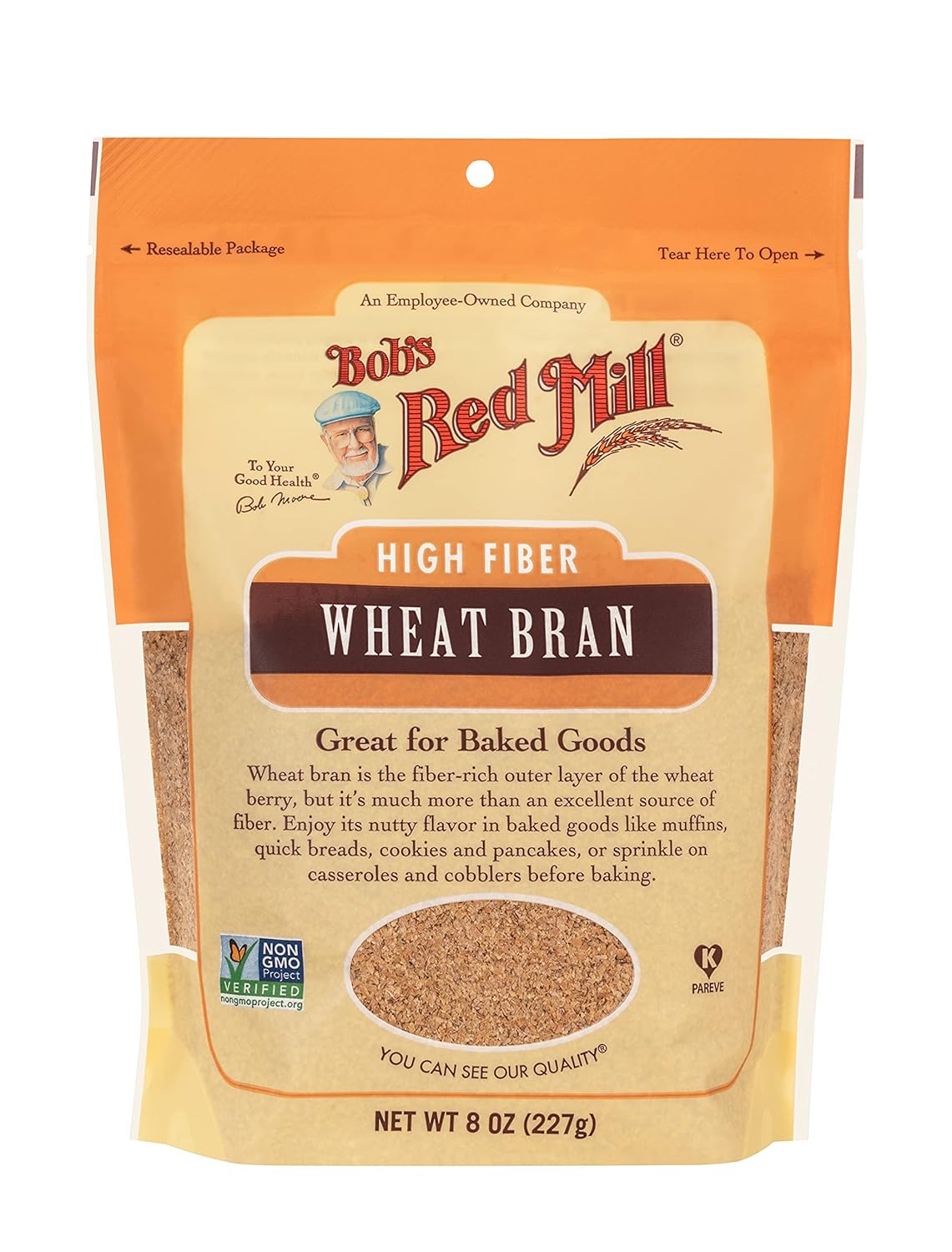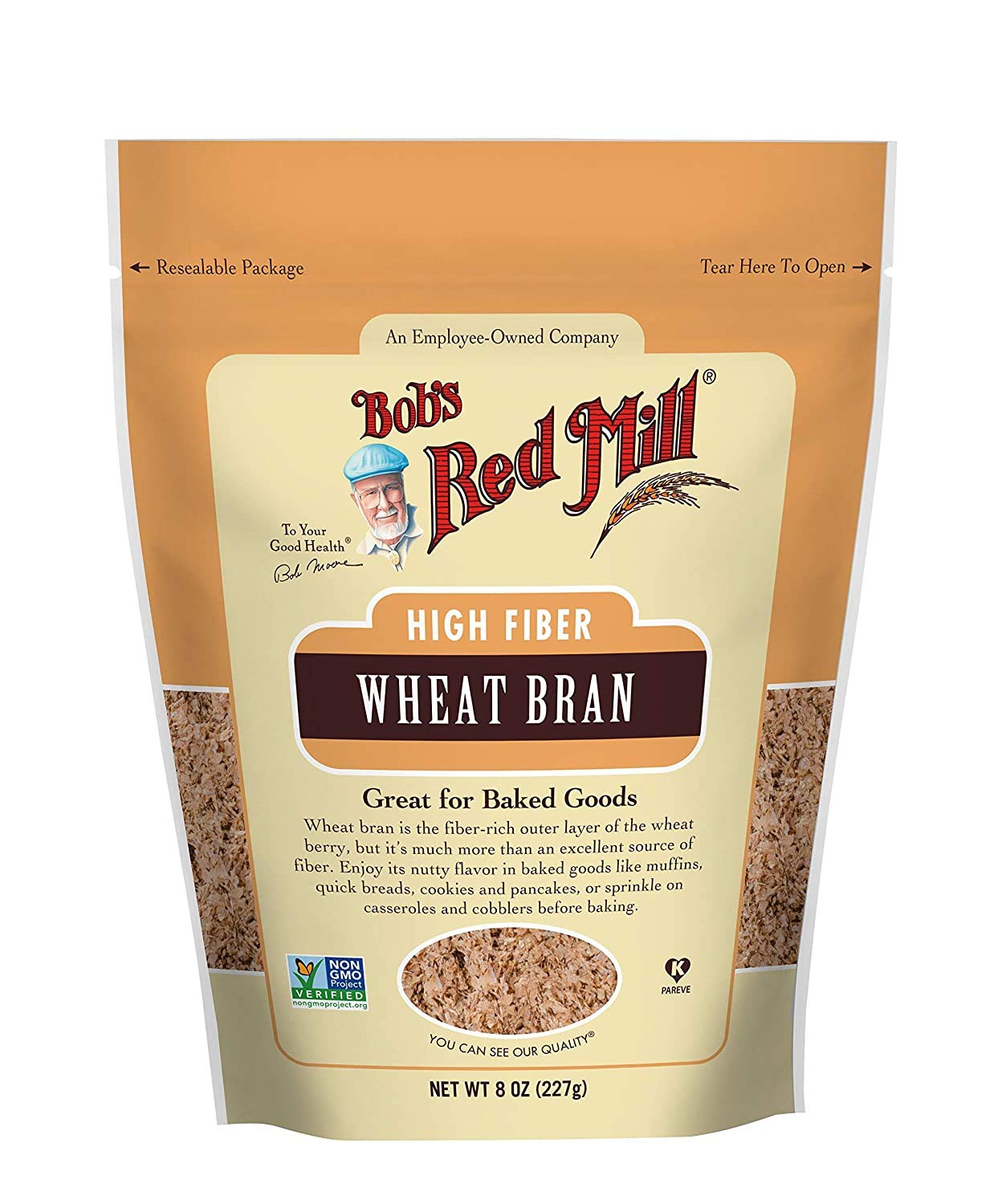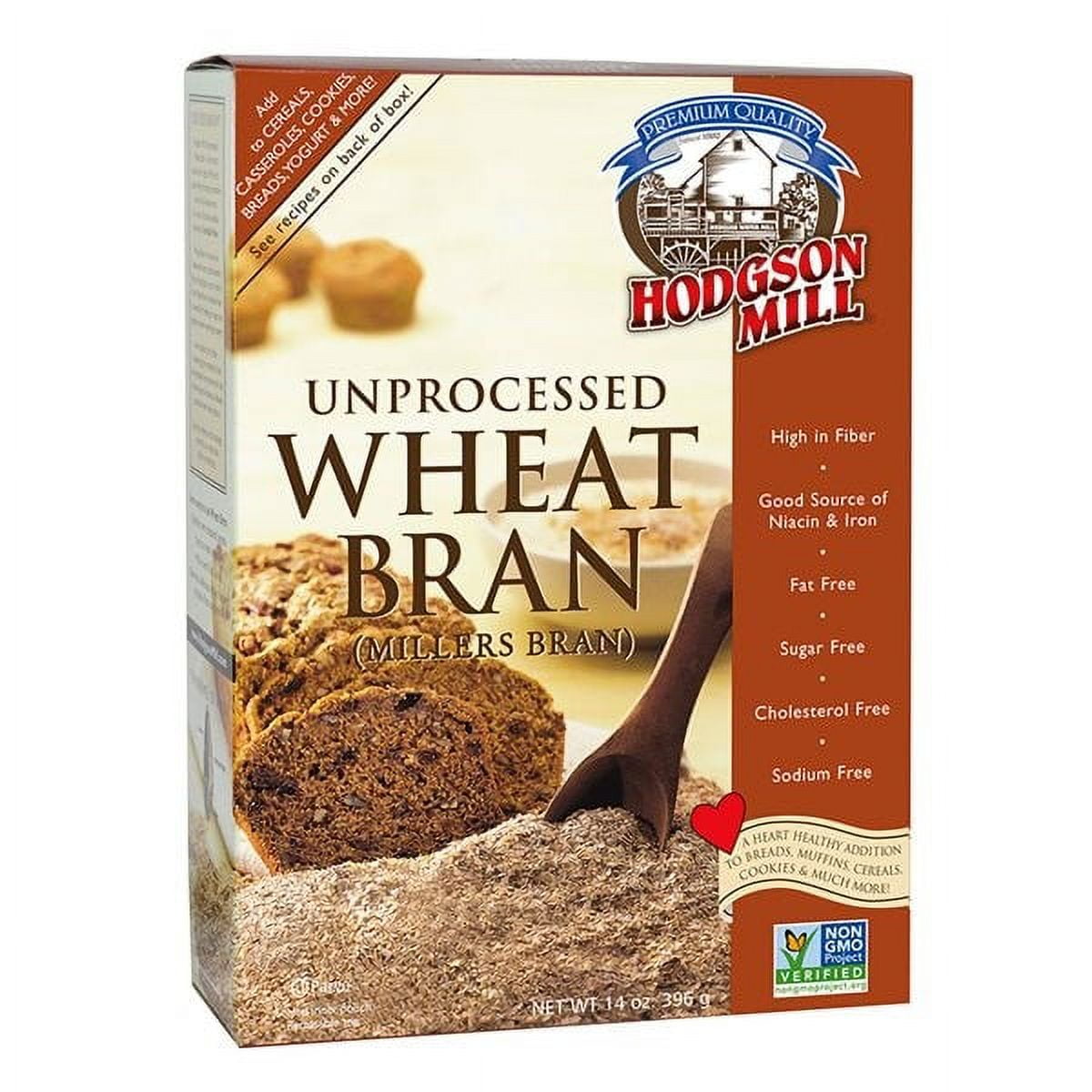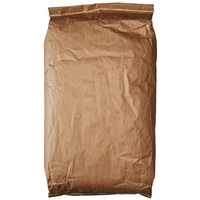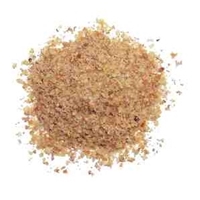BREAKFAST AND BRUNCH
BREADS
Wheat Bran
Wheat bran is the nutrient-rich outer layer of the wheat kernel, which is typically removed during the milling process of refining wheat into white flour. Rich in dietary fiber, vitamins, and minerals, this ingredient makes a nutritious and versatile addition to a variety of dishes. Wheat bran is becoming increasingly popular among health-conscious individuals due to its multiple health benefits such as promoting digestive health and aiding in weight management.
In the kitchen, wheat bran is frequently used as a supplement for baking bread, muffins, pancakes, and other homemade treats. By incorporating wheat bran into your baking goods or as a cereal topper, you can add a natural and hearty fiber boost to your meals. Its slightly nutty flavor complements a wide array of sweet and savory dishes, providing a delicious way to increase the nutritional value of everyday meals.
77%
CARBS
5%
FAT
18%
PROTEIN
35 Wheat Bran Products
Bob's Red Mill Wheat Bran
Shiloh Farms Bran, Unprocessed Coarse, Organic
Bob's Red Mill Wheat Bran
Bob's Red Mill Wheat Bran
Bob's Red Mill Wheat Bran
Bob's Red Mill Wheat Bran 4 pk
Giustos BG13580 Giustos Bakers Wheat Bran - 1x25LB
Hodgson Mill Unprocessed Wheat Bran
Great River Organic Milling Wheat Bran, 40 Pound
Giusto's Wheat Bran (1x25LB )
Wheat Bran Is Frequently Used With
Wheat Bran FAQ
Cooking with wheat bran can sometimes present difficulties mainly because of its high fiber content. The higher fiber content can absorb more moisture making baked goods dry if too much is used. It's important to remember that wheat bran is not flour and therefore can't replace it entirely. Instead, it works well when used to supplement or replace a part of the flour in recipes. While wheat bran is generally used in baking, it also works well in shakes and smoothies, or as a topping for salads or cereal providing an added crunch.
A common mistake when using wheat bran is not factoring in its high fiber content during recipe adjustments. If you're increasing the amount of bran, consider adding more liquids or an extra egg to balance it out and avoid overly dry results.
To get the most out of wheat bran, experiment with it in different types of dishes ranging from sweet to savory. You can also grind it into a finer consistency using a kitchen blender or food processor to use it in delicate recipes like cake or muffins.
Here's a little-known tip: Wheat bran can also be used as a texture enhancer in meat dishes. Adding a bit of bran to your meatballs or meatloaf gives it a tender, moist consistency while also increasing the dish's fiber content.
Remember, too much of anything is not good. Make sure to introduce wheat bran to your diet gradually to allow your digestive system to adjust to the increased fiber.
Can you substitute wheat bran for flour?
How does wheat bran affect the texture of baked goods?
Can I use wheat bran in smoothies?
What are some savory recipes in which I can use wheat bran?
Does wheat bran change the taste of food?
Can I use wheat bran in pancakes?
Can wheat bran be used in soups?
Can you eat wheat bran raw?
Can I make muffins using wheat bran?
Does wheat bran make bread dry?
Expiration & Storage Tips
When does wheat bran expire?
Unopened wheat bran can be stored in the pantry and will generally stay at best quality for about a year. Once the package is opened, it can still be safe to consume for a longer period, up to 18 months, but it might lose some of its freshness and nutritional value after six to nine months. Wheat bran can also be frozen for extending the shelf life even further. In the freezer, it will maintain its best quality for about two years. Always make sure to check the 'Use by' date on the package to ensure the product hasn't gone past its peak quality timeframe.
How do you tell if wheat bran is bad?
Identifying if wheat bran has gone bad is a bit tricky due to its naturally dry texture and light brown color. One thing to take into consideration is the smell. Fresh wheat bran has a slight nutty scent, while old or expired bran will have a stale or slightly 'off' odor, similar to old cooking oil. It can also taste rancid or unusually bitter when it's outdated. Finally, check for any signs of mold, insects or unusual color changes as these can be indications of spoilage.
Tips for storing wheat bran to extend shelf life
• Always store wheat bran in a cool, dark and dry place to preserve its quality and prevent it from getting rancid.
• After opening, keep it in an airtight container to protect it from moisture and other contaminants.
• For extended storage, consider freezing the bran. Make sure to store it in a freezer-safe airtight bag or container to prevent freezer burn. It doesn't need to be defrosted before use, you can add it directly to your recipes.
• Avoid using wet spoons or utensils to take out the bran from the container as it can introduce moisture, which can speed up the spoilage process.
EXPIRES WITHIN
6 - 10
MONTHS
Health Info
Macros
37g
CARBS
2g
FAT
9g
PROTEIN
Allowed on these diets
LOW FAT
HIGH CALCIUM
VEGETARIAN
MEDITERRANEAN
VEGAN
LACTOSE FREE
Contains these allergens
WHEAT

